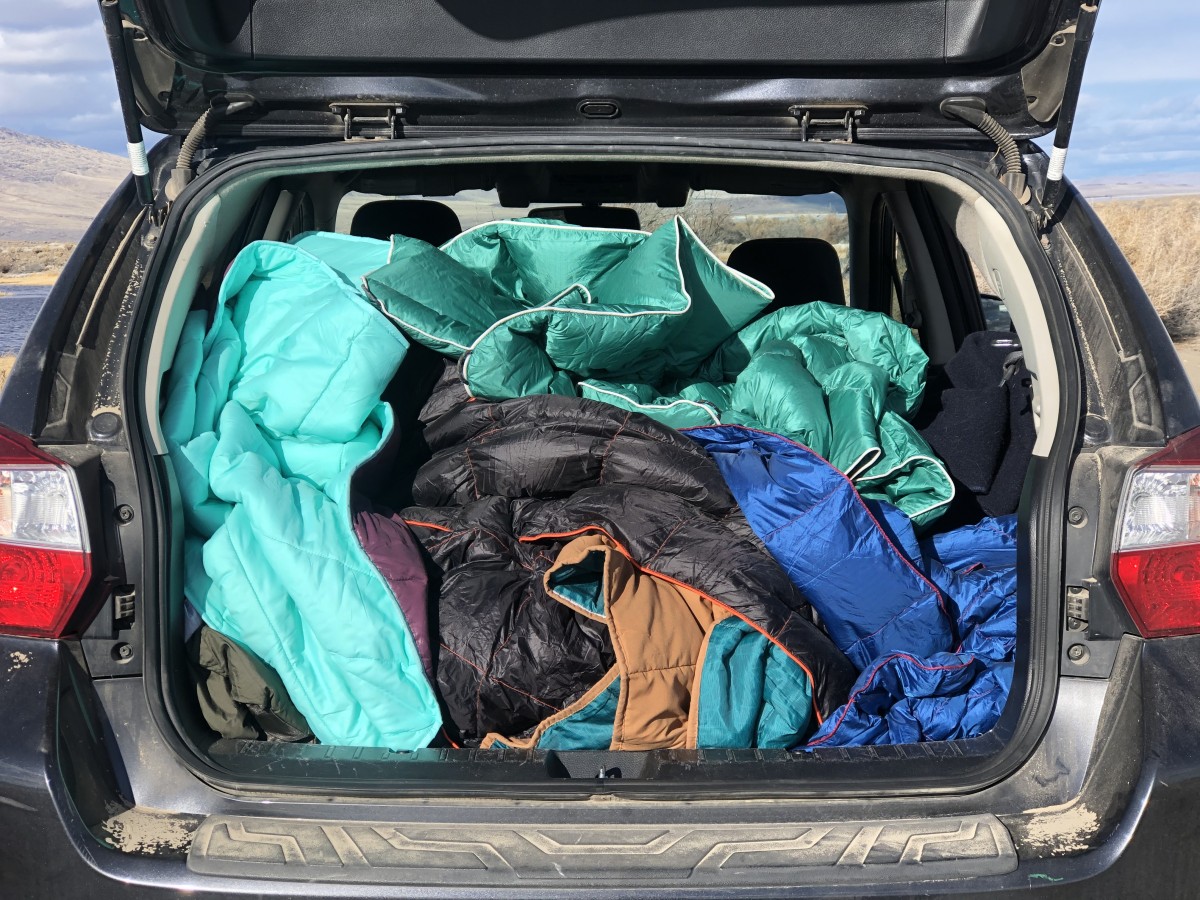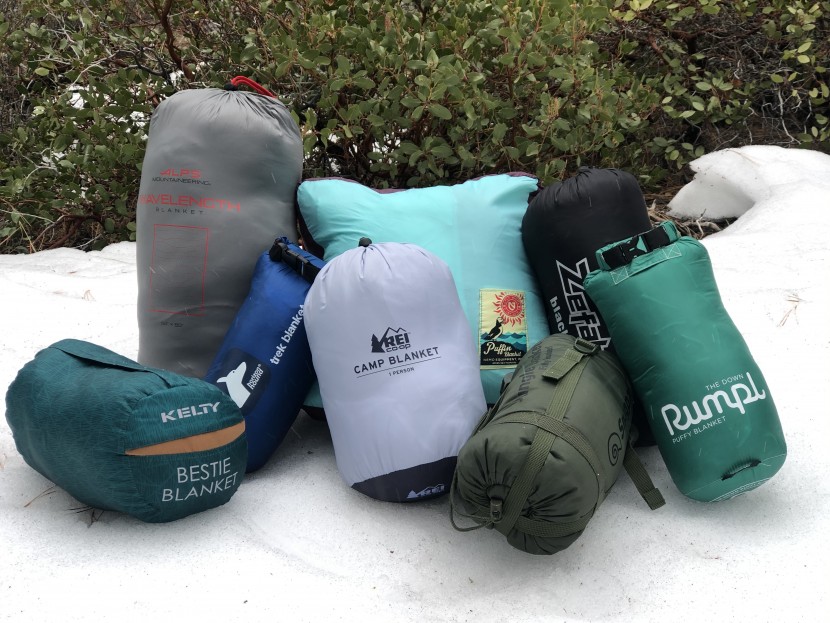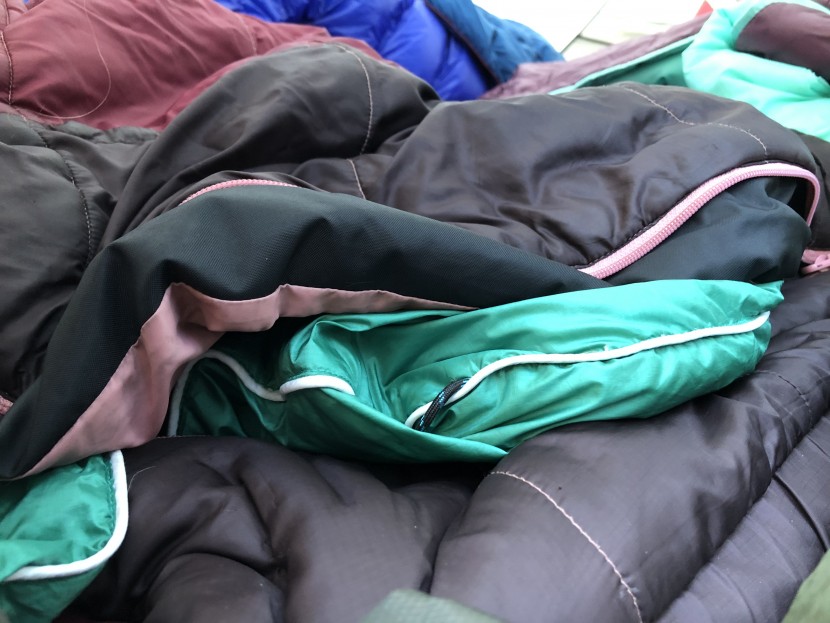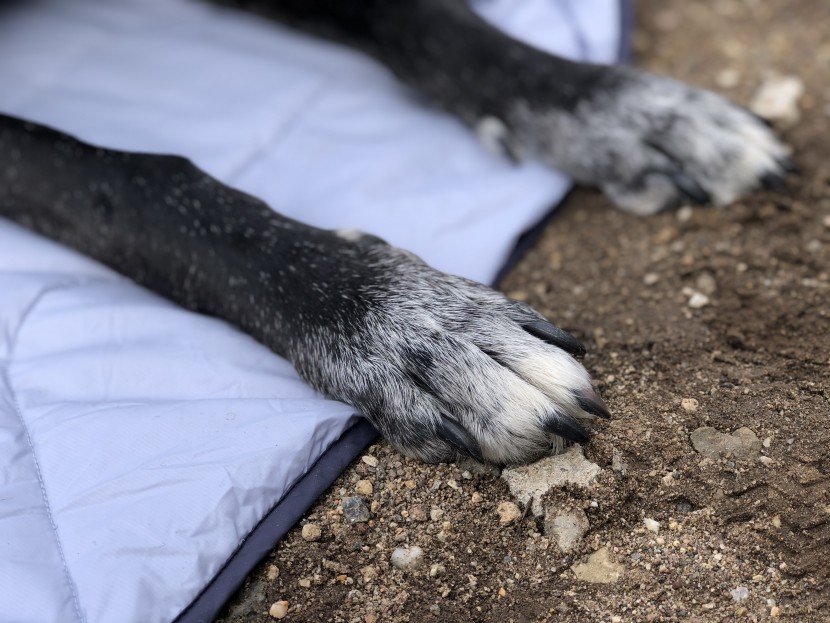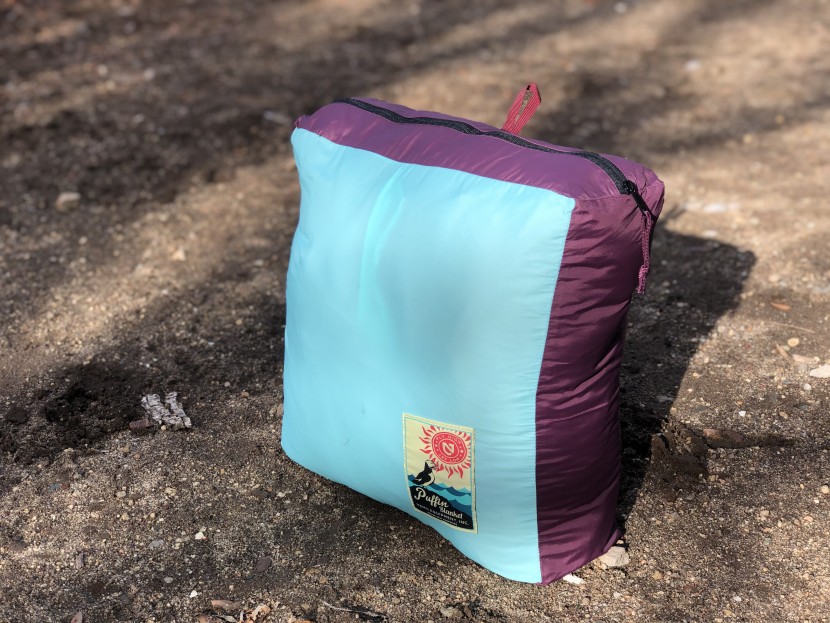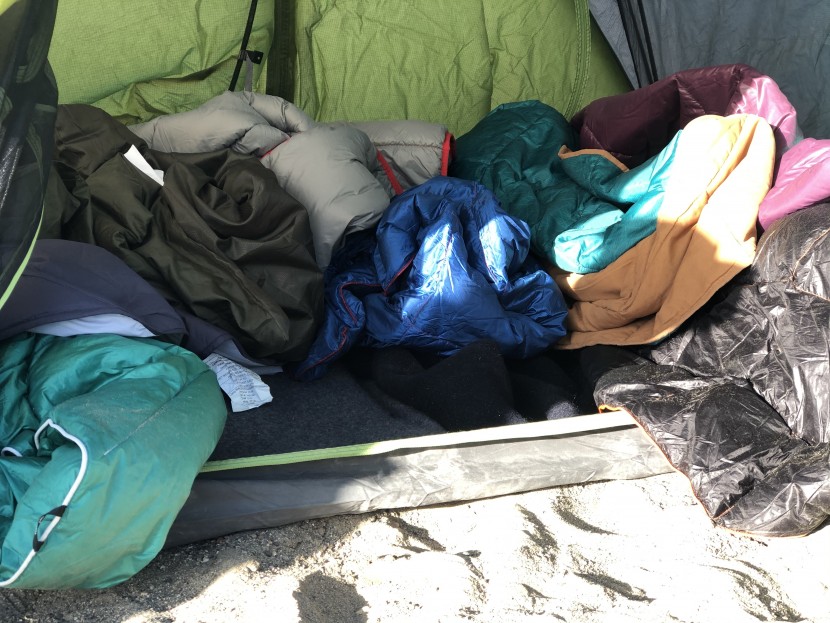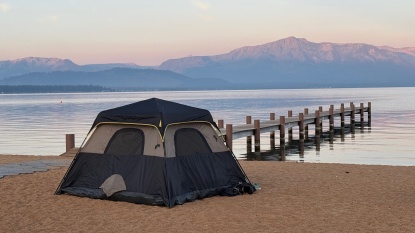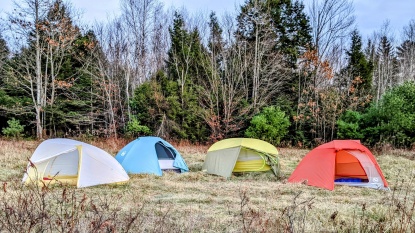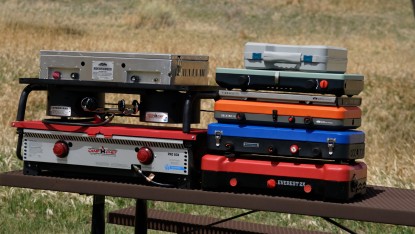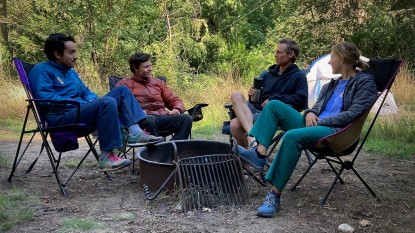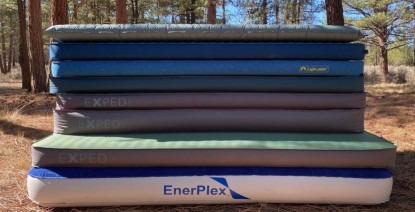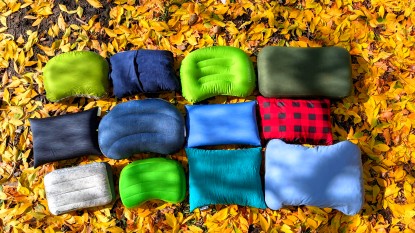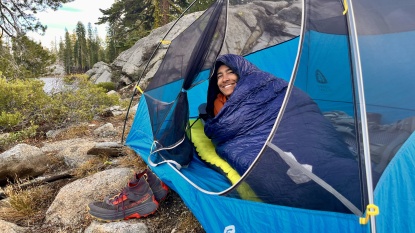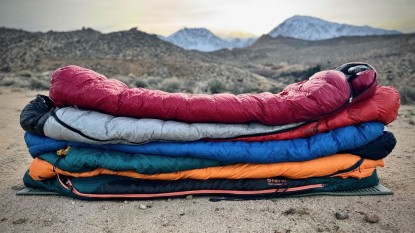It seems there are as many camping blankets out there as there are opportunities to use them. So how do you figure out which one is the perfect blanket for how you want to use it? We're here to help you figure that out. In addition to testing a slew of different blankets, we aim to walk you through the process of narrowing down the wide world of options. From wool blankets to packable blankets for winter camping, we're here to help.
Do You Need a Camping Blanket?
The first and arguably most important question is if you need a camping blanket to live your coziest life. Here we'll cover the main reasons you might be considering an additional layer to lead you down the right path.
Ditching the Sleeping Bag
Perhaps you've weighed your sleeping bag, and it's bulky and heavy. You've had the thought, “I go camping in the summer when it's warm - what about just a blanket, to ditch some of that weight?”. A lot of us love to decrease the weight of our packs, but can you really get rid of a sleeping bag for a blanket? Maybe.
Related: Best Ultralight Sleeping Bag
By ditching a bag and going with a blanket, you've removed insulation underneath you and on your sides. No matter how little you move in your sleep, an open-design blanket tends to allow much more air space around your body. This air space has to be heated by you while you're sleeping, and the more space you have, the more heat you have to produce to keep it warm. Even if you're camping on warm nights (we're talking 60°F+), adding extra space around your body by switching to a blanket will feel cooler. Additionally, you're much more likely to lift part of the cover's side, letting trapped heat out and cool air in.
If you only camp in warm weather and tend to be warm while you sleep (or prefer sleeping in a chillier environment), this might be an excellent solution for you. However, if you're camping in “warmer” weather that “only” gets down into the 40s or 50s, a camping blanket is unlikely to be enough to keep you warm all night. Check the manufacturer's rated temperature before buying a blanket to know if it's built to be up to the task of being your sole insulation. If it doesn't have one, it might not be the ideal replacement piece.
One other solution, for an in-between sleeping bag/camping blanket option, is a sleeping quilt. These typically still have a foot box similar to a sleeping bag, but open up into a blanket around your body. They tend to be lighter in weight than sleeping bags (though not always, so be sure to check if this is a big factor for you) and retain heat a little better than a camping blanket. The foot box not only keeps your feet warmer and less drafty but also helps to keep the blanket in place, preventing it from falling off you in the middle of the night.
Adding to Your Sleep System
Maybe you've been a three-season camper, and you're venturing into the world of winter camping. Or perhaps your sleeping bag just isn't keeping you as warm as you'd like to be, and you're considering adding a blanket to the mix. If you're making a switch to hammock camping, you may find the extra airflow underneath you is making you cooler than you'd like to be.
Related: Best Hammocks for 2025
These are all great opportunities for a camping blanket to shine, and just about any option you choose will add warmth to your sleep system. If you're gearing up to add it to your backpacking ensemble, you'll also want to consider weight and packed size of your potential blanket before buying. If you're car camping or in your backyard hammock, you'll have far more options.
The Comfort of a Blanket
Maybe you've got a great sleep system that you already love, or perhaps you're spending nights in the comfort of yourrelatively bed. There are still a TON of ways a camping blanket can enhance your everyday experience. Versatile and portable, they're ideal for chilly nights around the campfire or all-day tailgating when snowflakes dance around you.
Many camping blankets are constructed of similar materials that you'll find in sleeping bags. Their construction makes them relatively durable and able to withstand lots of use. They can double as a warm cocoon around your dog while you camp AND a snuggle sheathe on the couch during a movie. The added durability can also make them excellent options for kids (or adults) who tend to be a little rough on their belongings, spilled food and drinks, and leaving them laying on the floor.
Certain types and sizes of camping blanket can even be used regularly on your bed at home, as a mid-layer or main layer. Others can be clipped or buttoned into a poncho for hands-free warmth. And still others can provide a warm, protective barrier to sit on in wet grass or on dewy ground. Smaller and compressible blankets can be packed along on a backpacking trip, as an emergency layer in the car, or as a travel companion. If any or all of these sound like what you're after, a camping blanket is a great fit.
Choosing the Right Blankie
So now that you've considered all the varied ways in which a camping cover can enhance your life, it's time to figure out which one will best suit you. We'll look at different types of insulation, various outer materials, and the many additional features you might appreciate.
Types of Fill
There are three main types of insulation or filling that you can choose from: down, synthetic, and wool. They each have their pros and cons, as well as often very different prices. We'll touch on each one briefly.
Down Blankets: Down filling is literal down feathers from birds; usually geese or ducks. More and more manufacturers these days are reporting where they source their down from if that is important to you. They'll also report the down to feather mixture, which is literally the percentage of fill that's down feathers versus regular feathers. Down is loftier, providing more warmth, and lighter, so more packable. Adding regular feathers adds a little bit of weight and an amount of firmness to the fill. In general, an 80-90% down, 10-20% feather ratio is common and fairly standard.
The benefits of a down blanket are that it is almost always lighter than synthetic materials or wool and can be compressed into a much smaller size; this is great for backpacking and travel. They're also impressively warm, as down feathers are the very same ones that geese or ducks will stand outside all winter wearing - a pretty good demonstration of their insulation powers! A typical down blanket (compared to the same size and thickness synthetic blanket) will keep you significantly warmer. This lowered need for extremely thick insulation again helps to cut down on the blanket's overall size and weight.
However, down won't retain its insulation or shape for as long as synthetic fibers. Birds shed their down feathers and grow new ones frequently, as the microscopic structure of the down degrades over time, slowly decreasing the amount of loft (and therefore warmth) that the feather can provide. This is also true of your blanket. They can usually be “re-fluffed” with clean tennis balls in a no-heat dryer, but their lifespan typically isn't as long as synthetic fibers. Depending on how often you used it and especially how often you compress it into a small space, you can usually expect to get a few good years of use out of your down blanket. The more you let it be fluffy and refrain from compressing it, the longer it will last. Jamming it into small spaces or frequently sitting on down will hasten its demise.
Another downside of down is that it loses warmth when it gets wet. Birds have regular feathers, usually with water-repelling oils, covering their down to prevent them from getting wet. Many down-filled camping blankets have exteriors with some level of water resistance to prevent the down from getting wet. If you have your heart set on a down blanket, we recommend ensuring the one you're after will keep its contents dry. As a final note, down blankets also are frequently more expensive than synthetic blankets.
As a bonus of these typically (though not always; be sure to read the fine print!) more water-resistant exteriors, the materials used to cover down blankets are often fairly durable. Many are also made of ripstop materials to add to this durability. This usually also makes them easier to clean both with a cloth or sponge for small spills. Throwing them in a front-loading washer, air-drying, and using clean tennis balls to “re-fluff” them in a no-heat dryer is also beneficial.
At the end of the day, down blankets are best characterized by their impressive warmth to weight ratio. If you're after a space to weight-saving option that's still very warm, a down blanket is likely your ideal option.
Synthetic Blankets: Synthetic filling can be made of a number of different materials, though most commonly polyester or resinated polyester fibers are spun into thin fibers, which provide the loft needed for adequate insulation. Some manufacturers make blankets of very long fibers to facilitate lofting and others wrap fibers in specific designs to create more loft.
The benefits of synthetic insulation include their longevity. Since they're not feathers, they tend to hold up better to being compressed, sat on, and re-fluffed. They typically hold loft and insulation for longer than down, and with proper treatment can last for many long years. Additionally, though not always, they are also cheaper than their down-filled counterparts.
Some synthetic insulations offer a bit of water resistance and can keep you a bit warmer if they do get wet. Unlike down, they don't compress as easily when wet, better maintaining that all-important loft. They can be hit-and-miss when it comes to upkeep though. Some are easily washable in a front-loading washer, while others are spot-clean only and still others are commercial washer or dry clean only.
Additionally, synthetic fibers are usually heavier than down, ounce for ounce offering less insulation value. The warmer the synthetic blanket, the thicker and heavier it's likely to be. Synthetic fibers also don't compress as small as down, so your overall packed blanket is going to be larger. There's also a lot of variety when it comes to the other details of synthetically-filled blankets, including variable outer coverings and features. We'll get into some of those in a bit.
In general, synthetic blankets are heavier, thicker, and larger, but can withstand more compression and abuse. If you want a long-lasting blanket you don't have to be so delicate with and don't mind the extra space and weight, a synthetic-filled blanket will likely serve you best.
Wool Blankets: Wool blankets are often actually a blend of wool and cotton. This is done for structural reasons as well as for feeling, as the thicker wool fibers used to make blankets tend to be fairly scratchy. Cotton is a much thinner, and therefore softer material, which most of us appreciate the feel of much more. Different wool blanket-makers use different wool-cotton blends, and some use 100% wool. Compared to other types of blankets, even blends can feel a bit scratchy, and are often most-appreciated on top of a sheet or with some other barrier protecting your skin.
One of the biggest benefits of wool is its ability to maintain warmth even when wet. This seemingly miraculous ability is possible for two reasons. First, the fuzziness of wool fibers does a pretty good job of shedding water droplets, like rain. Secondly, the microscopic structure of wool actually allows the fibers to soak up around 30% of its own weight in water, without feeling wet on the outside. It's not foolproof, but it makes a big difference when you're sweaty or it's raining on you.
Wool blankets are relatively heavy - a definite downside if you're looking for an ultra-portable option. However, Harvard Medical School and other health professionals point to certain evidence touting the benefits of sleeping under weighted blankets. One wool blanket might not qualify (depending on what you choose), but it can be a part of a weighted sleeping system that many find comforting to sleep under. They're a great option when you don't need portability - for car camping, RVing, or adding an extra layer to your bed in the winters.
One challenging factor of owning a wool blanket is how to care for it. Wool can be rather picky in its upkeep, and typically doesn't do well in your standard at-home washing machine. Many wool blankets recommend that you wash them very infrequently or even dry clean them instead. If your wool blanket is able to be washed at home, you can almost certainly expect it to shed plenty of fibers in the washing process and likely needs to be air or line-dried. It may also shed colored dye in the process, which can be alarming at first. However, many wool blankets are renowned for their longevity with proper care.
To summarize, wool blankets stay warm when they're wet (to a point), add weight to your sleep system, but with the right care can last for a long time. If you want a long-term blanket that stays consistently warm, appreciate extra weight while you sleep, and don't mind a relative lack of portability, a wool blanket may be the right fit for you.
Blanket Exteriors
Whether a blanket is filled with down or synthetic insulation, there are many materials and treatments that manufacturers may use for the outside. Polyester and nylon are the most common materials used. Both are fairly strong, easy to care for, and reasonably durable. They do a pretty good job of repelling everyday debris like sand and pet hair. As a kind of warning, they are often very slippery as well. Though this is what repels dirt, it can also make the blanket slide right off your lap, the couch, or your sleeping body. Some blankets have a soft(er) side to put against your body that's slightly less slick, but this varies greatly from blanket to blanket.
On top of the materials used, a DWR coating may be applied. This Durable Water Repellent coating helps the blanket to resist water, spills, and stains. It will wear off over time, use, and repeated washings, but can generally be reapplied with a product like Nikwax. Using ripstop materials can also help extend the life of a blanket - particularly one that's being carted around outside, used next to popping fires, and enjoyed by pets with claws.
Though we've touched on it briefly in this article, not all camping blankets are easily washable at home. While many can be easily put into your front-load washing machine, others have to be commercially cleaned, dry cleaned, or can only be spot cleaned with a wet rag. No matter what the care instructions of the blanket you choose say if you want your blanket to last for as long as possible, we recommend you follow those instructions carefully.
Additionally, no blanket (or any warm layer with lofted insulation, really) should be kept compressed for long periods of time. To store your blanket, it's best to hang or fold it lightly to allow it to retain its fluffiness and loft. By only stuffing it into a small sack when you're actively transporting it, you'll help extend the life of whatever blanket you choose.
Additional Features
Beyond your basic blanket, some models come with extra features that may appeal to you. Several have buttons or snaps that turn them into a poncho you can wear. This is great for tailgates and camping when you want the warmth but also need your hands free. Some have hooks and loops that can be used to hang it during storage or attach it to the ground for sitting on. Others have pockets; some are for your hands, some are zippered, and can hold small items you may want to keep close. Nearly all come with some sort of stuff sack, from large, easy to use pouches to roll-top and compression bags.
There are a lot of camping blankets you could choose from. By considering what kinds of activities you want your blanket to cover you during should help you narrow down the type of filling, exterior characteristics, and additional features you may want. Whatever your lifestyle, there's a perfect match for you out there.

